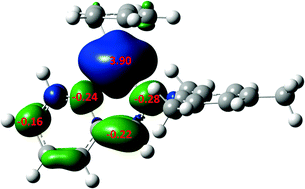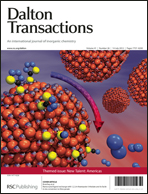Paramagnetic CpCr(III) complexes with antiferromagnetically-coupled anionic radical diimine and pyridine-imine ligands were prepared and characterized. The diimine chloro CpCr[(ArNCR)2]Cl complexes (1: Ar = 2,6-iPr2C6H3 (Dpp), R = H; 2: Ar = 2,6-Me2C6H3 (Xyl), R = Me; 3: Ar = 2,4,6-Me3C6H2 (Mes), R = Me) were synthesized by treatment of previously reported Cr(diimine)(THF)2Cl2 precursors with NaCp. Reduction of 1 with Zn gives CpCr[(DppNCH)2], 4, resulting from reduction of Cr(III) to Cr(II) with retention of the ligand-based radical. Alkoxide complexes CpCr[(DppNCH)2](OCR2R′) (5: R = Me, R′ = Ph; 6: R = iPr, R′ = H) were synthesized by protonolysis of Cp2Cr with HOCR2R′ in the presence of the neutral diimine and catalytic base. The corresponding radical pyridine-imine complexes CpCr(PyCHNMes)Cl (9), CpCr(PyCHNMes) (8), and CpCr(PyCHNMes)(OCMe2Ph) (11), were prepared by analogous routes. Oxidation of 8 with iodine gives CpCr(PyCHNMes)I (10) where oxidation of Cr(II) to Cr(III) again occurs with retention of the anionic pyridine-imine radical ligand. The molecular structures of complexes 1, 2, 4–8, 10 and 11 were determined by single-crystal X-ray diffraction. Unusual low energy bands were observed in the UV-vis spectra of the reported complexes, with particularly strong transitions observed for the Cr(II) complexes 4 and 8. The electronic structure of pyridine-imine complexes 8 and 10 were investigated by theoretical calculations.


 Please wait while we load your content...
Please wait while we load your content...